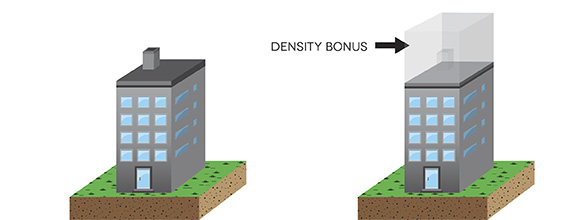Model Affordable Housing Density Bonus Ordinance
A model ordinance for affordable housing provides two alternatives:
(1) a mandatory alternative in which affordable housing is required, in some manner, in all development that produces new residential units, either through new construction or through rehabilitation and conversion of existing units or commercial space;
(2) an incentive-based approach in which a density bonus of one market-rate unit for each affordable unit is offered as of right. In either case, the affordable housing density bonus is offered for all types of residential construction.
Further reading: Density bonus
The model ordinance uses the U.S. Department of Housing and Urban Development definitions of low- and moderate-income to establish eligibility criteria for the purchase or rental of affordable units.
Some communities with such ordinances have made a political commitment to such housing, recognizing that, in some real estate markets, affordable housing would not be produced without governmental intervention, and others have adopted such ordinances to respond to state-established housing goals.
In addition, such ordinances ensure that critical governmental service workers (e.g., teachers, firefighters, and police officers) can afford to live in communities where they work despite their low pay. Numerous monographs and studies have described the operation and success of such programs in both suburban areas and central cities.

